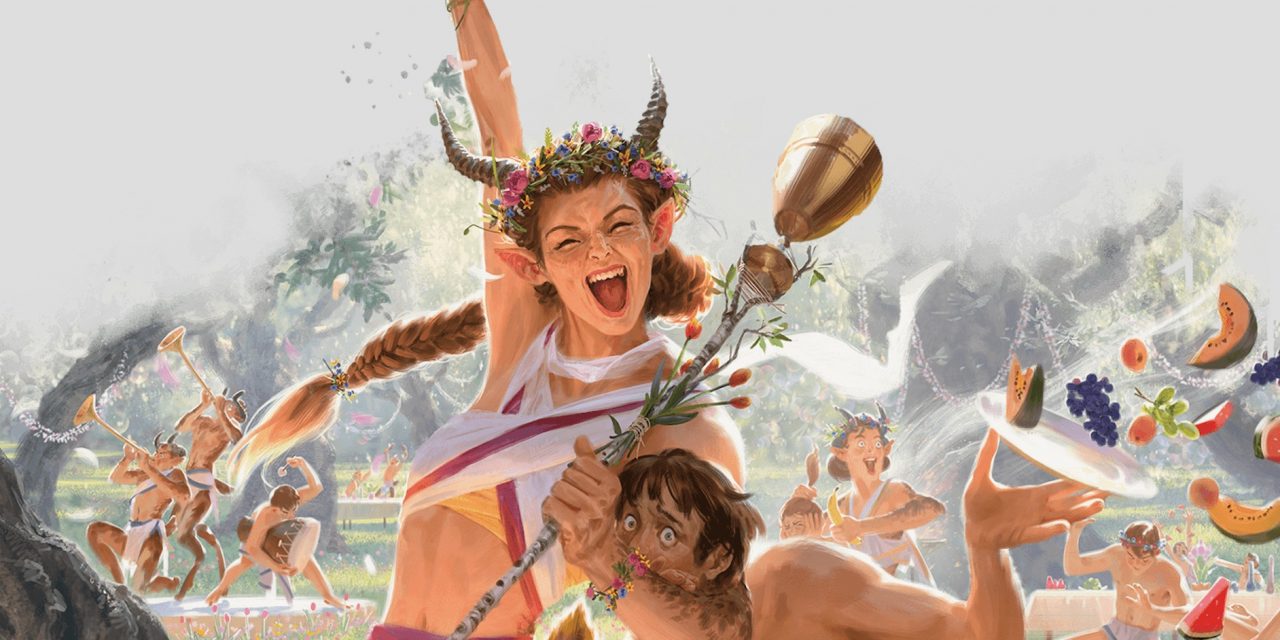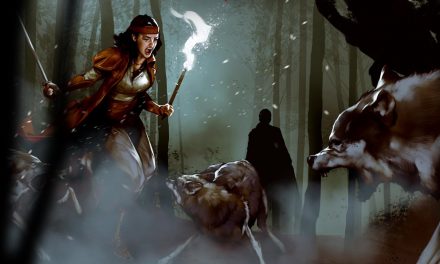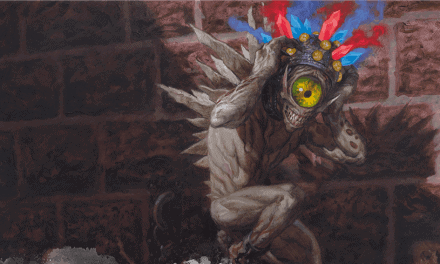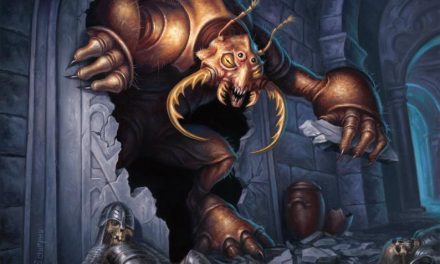One of my favorite creatures are the Satyrs in D&D 5e. Not only do they make for great NPCs as pranksters, partyers, and panpipers of the Feywild, they’re also a playable race from the Mythic Odysseys of Theros campaign guide.
I grew up with a deep love of Greek mythology and the Feywild is one of my favorite locations in Dungeons & Dragons.
So I’ve been waiting to write this for long enough:
Let’s talk about Satyrs in D&D 5e!
Party Animals
Satyrs are goat-featured hedonists who love strong drinks, wild dances, and exciting music.
If a satyr has even heard of a holiday, they are bound to celebrate it with a raucous party. Considering the large amount of celebrations and holy days across the various cultures, Satyrs have more than enough excuses to indulge in their hedonistic tendencies.
But it’s not just indulgence and debauchery that drive Satyrs and their festivities.
To satyrs, this is a way of life.
By frolicking, satyrs lift up their cares and free themselves from worrying about the past or the future. Revelry is how they fully live in every present moment. In their eyes, the best way to honor the gods is by experiencing all that life has to offer with all of one’s senses.
Of course, because Satyrs in D&D 5e are so driven by instinct and intuition, they are notoriously unpredictable. They almost never consider the consequences of their actions and love to bring out the party animal in others. Few things are more fun than roping others into their revelry!
There is perhaps no greater example of the Chaotic Neutral alignment than the Satyr.
The Eccentricities of Satyrs in D&D
As one might expect, Satyrs have a love of eccentricities. They act in the moment and don’t give any thought to what drives them. Even if a Satyr did seek to understand what drives them, they’d be even less likely to explain it to others.
To the Satyr, these thoughts are pointless and too heavy.
They may find it impossible to resist climbing trees and statues or burst into song rather than simply say what they’re thinking.
Decorating themselves with flowers and eccentric clothing, the Satyr’s eccentricities are how they bare their soul to the world around them.
Panpipes
Satyrs love music in all of its forms, but they have a special love of the panpipes. Playing these pipes allows the Satyr to create magical effects with its music.
With this music, the piper can string together charming melodies that entrance the target. If they feel threatened (or are just being mischievous), they may instead play a melody that frightens the listener or puts them to sleep.
Fey Nature
As creatures of the Feywild, Satyrs are naturally resistant to magic. This gives them advantage on saving throws against spells or other magical effects.
Satyrs often speak Common, Elvish, and Sylvan.
Damh: The Fey Deity of Music
Satyrs revere Damh (pronounced “Dav”) as their Fey deity. Damh has a deep and serious love of music, which the Satyrs appreciate. Because of this, Satyrs are accustomed to partying with the Bards who invariably join their celebrations.
Satyrs in D&D 5e – Monster Manual
Satyrs in D&D 5e’s Monster Manual are admittedly lacking in description. They are quickly described as chaotic revelers, though the provided information about their pipe abilities is very nice to have.
It’s very unlikely that Satyrs are going to attempt to fight the party. They will very likely invite them to join their festivities and may try to charm them if the characters decline.
Despite only having a CR of 1/2, Satyrs often travel in groups. If forced to defend themselves, they use their horns to ram enemies or fight with shortswords and bows. One member of a group of Satyrs may have panpipes that they can use to charm the players.
Satyrs in D&D 5e – Mythic Odysseys of Theros
Satyrs in D&D 5e’s Mythic Odysseys of Theros setting are a playable race. The book greatly expounds on Satyrs and their unique culture in Theros. Of course, this can easily be ported to whichever setting you prefer to play.
While I am still excited to play a Satyr in future games, I was somewhat shocked when looking over the Satyrs’ traits. I expected them to be predominately flavor and hijinks, but their stats are actually incredibly powerful.
Unsurprisingly, they receive bonuses to Charisma and Dexterity. But they have a base walking speed of 35ft with the ability to jump extra high.
But most of all, they keep the magic resistance trait.
Fireball? Meh.
Hypnotic Pattern? Meh.
Disintegrate? *Goat Noises*
Their stats naturally lend themselves towards Bards and Rogues, as one would expect. However, I can’t help but chuckle at the idea of a Satyr Monk with the Mobile feat. The mental image of maximizing its jumping and leaping abilities is hilarious.
Xenagos: The God of Satyrs in Theros
In Theros, Xenagos was a Satyr who managed to achieve godhood. He had a reputation as the ultimate partymaster that the Satyrs had ever known. However, he grew bitter when he learned that the gods were beholden to mortals for their continued existence. He used those feelings to inspire belief that ascended him to godhood.
However, this wouldn’t last long. He was ultimately killed by another god’s champion.
Satyrs in Theros look on Xenagos fondly as a satyr who so strongly committed to living his life that it even shook the domain of the gods.
But his story also serves as a warning of how quickly bitterness can sour a great joke. There is no fun for anyone in a scheme that gets out of hand!
Conclusion:
Satyrs are fun and dynamic creatures. Particularly for lower-level parties that are less likely to be resistant to their charms, Satyrs can create encounters that are memorable for the players. The characters probably won’t remember and may find themselves with an awful hangover, but you know what they say: you only live once.
I think Satyrs are painfully underused, so I am happy to see them included in the world Theros.
If your party is planning a trip to the Feywild or the world of Theros, the Satyrs in D&D 5e are a must-have!









